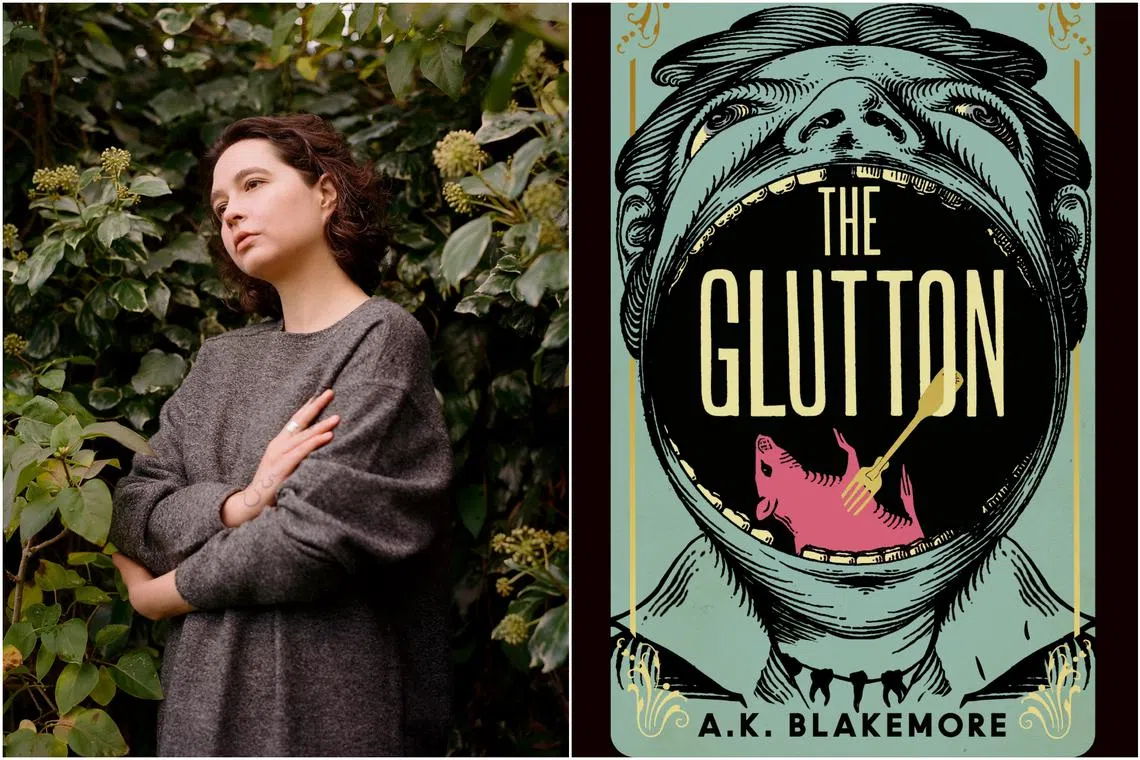Book review: Poetry and filth in A.K. Blakemore’s The Glutton set in revolutionary France
Sign up now: Get ST's newsletters delivered to your inbox

The Glutton by A.K. Blakemore.
PHOTOS: ALICE ZOO, GRANTA BOOKS
Follow topic:
The Glutton
By A.K. Blakemore amzn.to/3NZDB4
Fiction/Granta Books/Paperback/323 pages/$21.50/Amazon SG (
3 stars
Inspired by the French myth of Tarrare, a French street performer and soldier with an insatiable appetite, A.K. Blakemore’s sophomore novel is a miasmatic re-imagination of a France in revolution, permeated thoroughly with the odour of poverty and the chaos of neglect.
Tarare – spelt with two Rs in the book – is strangely afflicted with a constant hunger. His diet, including absolutely everything, ranges from tubs of tincture to live rats with fingers “frozen in an attitude of strangely human-seeming panic”.
It is a lifestyle that results in him exuding a stench impossible to mask, and he is consequently shunned everywhere, his depravity conspicuous.
Aged 26, he is plagued with the existential fear that hunger may be all he is.
He begins the novel on a hospital bed, shackled at the wrist and nipping the chins of nun nurses for fun – until he begins to tell his story to one curious caretaker, transporting readers back to more halcyon days, before it all turned to rot.
Blakemore is a poet, and she suffuses these early scenes in the French village with elegiac mythos. Sons may be sent away to the city for work so there is one fewer mouth to feed, but around the fire, the women still “sing loudly and badly of the angels in heaven, then softly of a sow asleep in a garden”.
Her vocabulary is unrestrained – skirts are “campanulate”, there are “lunulae” of light and a metal spoon tastes of “sapour”. Some of these are overwrought – an ornate worldview foisted upon an era of privation.
But at other times, this poetic eye allows Blakemore to render some of the most breathtaking lines.
Of Tarare’s place, she writes: “If history is a stone lion, Tarare is the ivy that fills its mouth.”
Of an individual’s bones, that they “join the black mass of unremarked death that feeds the daisies and ripens the wheat that makes the bread”.
There is a limit, however, to this constant bathos generated in the segue between the meaningless individual and the unforgiving cosmos.
Though Blakemore sincerely humanises the Tarare myth – successfully, for he is no empty metaphor for the clamouring French Third Estate – this is not enough to overcome the essential one-dimensionality of his overpowering hunger.
Tarare’s occasional moments of clarity and reflection do little to alleviate this monotony. The intense focus on Tarare also relegates the rest of France, including Napoleon Bonaparte, to nonchalant onlookers to his freak show.
This narrative choice ultimately relies too much on Blakemore’s talent to sustain – which she does, just barely.
The strongest section of The Glutton comes when Tarare joins the ranks of a cabal of blackguard itinerants who discover his talent and begin exploiting it for profit – the few real moments of emotional heft as the debasement of Tarare begins despite their real sense of kinship.
Readers are shown a harrowing glimpse of the reality that Tarare is merely one of many forsaken and left to fend for themselves in an imploding polity.
It is a Hobbesian rebuttal to historical narratives of the French revolution with their focus on the political debates and power struggles of elite classes.
As Tarare remarks: “Isn’t that where all the trouble started? That a man must eat or die.”
Base needs have always been the driving concern of the nameless majority, and through Blakemore’s writing, for a while, this hellscape is all there is.
If you like this, read: The Scarlet Pimpernel by Baroness Emma Orczy (Ancient Wisdom Publications, 2022, $14.47, Amazon SG, go to amzn.to/47ryD7D
This article contains affiliate links. If you buy through these links, we may earn a small commission.


